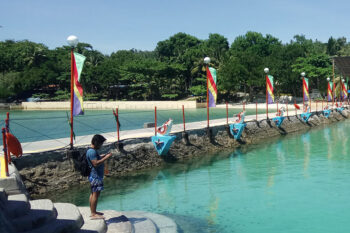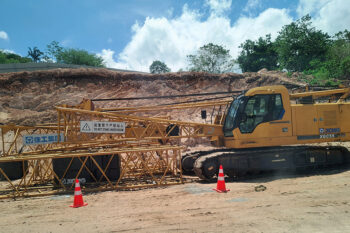[A modified transcript of a 15-minute presentation under the panel “Peoples and Faiths: A Mindanao Overview” at the Ateneo de Manila University (ADMU)-School of Social Sciences (SOS) – Mindanao Scholars’ Consultation-cum-Conversations on Mindanao Studies” September 12-13, 2018, Ateneo de Davao University, Davao City, Philippines]
Salamun ‘alaykum and good morning to all of you!
Thank you, Sir Joey [Sescon] for giving me carte blancheto focus on any topic; hence, I opt for “Mindanao Studies: A Proposed Framework”. In continuing this conversation started by Bro. Karl [Gaspar], I shall give an introductory anecdote, then state the existing conceptual framework in the study of Mindanao. Thereafter, I shall propose an alternative framework. After laying down this proposed framework, I shall talk about the ‘target profile’ to be followed by the objectives. Then I will proceed with my recommendation and finally make my concluding remarks.
Introductory Anecdote
At the outset, let me narrate to you an anecdote about a Maguindanaon perennial student who always strives to tell the story of Mindanao to himself, his fellows and others. By the way, ‘Maguindanao’ is where we derive the name ‘Mindanao’. (According to one view, Maguindanao is derived from ‘maginged’ (community) and ‘danaw’ (flood, inundation, marsh) to mean “inundated plain”. So, Mindanao (‘mindanaw’) means ‘inundated’.)
In October 2016 at the Philippine Sociological Society (PSS) Conference here in Davao City, the said student presented a paper entitled “Bay‘ah: The Missing Link in the Military’s Denial of ISIS’ Presence in the Philippines” (see https://mindanews.com/mindaviews/2016/10/marginalia-bayah-the-missing-link-in-the-militarys-denial-of-isis). At the end of the presentation, a lady professor who claimed to be connected with the military intelligence stood up and confidently dismissed the presentation’s thesis (ISIS’ presence in the country).
A few months later, on May 12, 2017 to be exact, at the Philippine Political Science Association (PPSA) Conference in Cebu City, the same student presented a paper on “The Media Discourse on Violent Extremism in Mindanao: A Postmodernist Reading”. During the open forum, a former government negotiator in the GRP-MILF peace talk insisted that “There are only ‘ISIS-inspired’ or ‘ISIS-sympathizers’ in the country.” Exactly 11 days afterward, the Marawi Siege happened!
Existing Framework
As I see it, this anecdote is a glaring example of the existing conceptual framework in which in the field of research on Mindanao, the Mindanawon is just a field researcher, research assistant or transcriber, while the Manila-based scholar or professor is the Mindanao expert in published books and conferences. Within this framework, Mindanao is treated as an object of study, and Mindanao Studies program is seen as an attempt to provide ‘voice’ to Mindanao through an outside spokesman, who happens to be the Manila-based author or professor. This is because Mindanao is not mature yet and can’t articulate enough.
Proposed Framework
What we humbly propose is a framework in which Mindanao is a subject. Under this framework, Mindanao Studies program is considered an attempt to provide ‘voice’ to Mindanao by letting it speak for itself. Here, Mindanao is no longer treated as mere object of study but subject as well. Having this framework, Mindanao will tell stories about the mosaic of its peoples as diverse as its water current and waves and yet as united as its rivers and the seas that surround it.
Target profile
As some of us know very well, the first step in the curriculum development process (CDP) is the definition of the ‘target profile’. By definition of the ‘target profile’ we mean an attempt to define what should be (‘target’) the characteristics (‘profile’) of a graduate from the program (Mindanao Studies). As such, it embodies what our expectations of the program graduates are.
Now, granting that a sound definition of ‘target profile’ provides both a comprehensive and a holistic blueprint that can be potentially implemented in the program, what then is our ‘target profile’? In other words, what is the supposed trademark of our graduate?
In broader terms and for the purpose of this conversation, we may say that our target profile is a graduate with ‘a balanced worldview’. It is a worldview that could tell both the story of laughter and tears of Mindanao. It is a worldview that listens to both the ‘gong’ of kulintang and the agony of palendag. It is a worldview that pays heed to both the splendor of okir and sarimanok, and the might of kampilan and lantaka.
Objectives
As among its objectives, the Mindanao Studies program is supposed to help in (1) the formation of a national motto or slogan (By the way, do we have already a national motto such as Pancasilaof Indonesia? Our Panatang Makabayan is too long to memorize, let alone internalize; for the millennials, that which is more akin to a hashtag or tagline is more appealing). The program should also be in tune with (2) the inculcation of national core values (such as patrimony, respect for diversity, acknowledgment of national history as a product of many local histories, and others). Obviously, it should also (3) contribute to nation-building and development through the discovery, promotion and utilization of Mindanao potentials and strengths.
Recommendation
One recommendation for this program is that it should not limit the students to the theoryof Mindanao but to engage them as well in its praxis, or else, it will definitely meet the same fate of peace and development studies programs whose students are fed up with concepts and theories but no sufficient skills in the actual practice of peace and development (for example, skills about negotiation and mediation, entrepreneurship, and investment analysis, among others).
To be specific, if the student would intend to focus on Mindanao history and culture, then she should be introduced to actual ethnography, cultural mapping, and local history writing. If she would want to delve into Mindanao politics and administration, then she should be directed to immerse in Mindanao Development Authority (MinDA), Southern Philippines Development Authority (SPDA), the Autonomous Region in Muslim Mindanao (ARMM), or similar agencies of the government. If she would incline to specialize in Mindanao economy and finance, then she has to be familiarized with the various plantations in Mindanao, the halal industry, Islamic banking, and shari‘ah-compliant investment products, among others.
Conclusion
In conclusion, we humbly submit that an ideal – if not the ideal – offering of Mindanao Studies program is not just to provide opportunity to tell the story of Mindanao, but rather to let Mindanao tell its own story, nay stories, to itself, its own people as well as to others. Being an interlocutor itself, Mindanao is now less in need of a spokesman, but rather of attentive listeners.
And I thank you for listening!
[MindaViews is the opinion section of MindaNews. Mansoor L. Limba, PhD in International Relations, is a writer, university professor, blogger, chess trainer, and translator (from Persian into English and Filipino) with tens of written and translation works to his credit on such subjects as international politics, history, political philosophy, intra-faith and interfaith relations, cultural heritage, Islamic finance, jurisprudence (fiqh), theology (‘ilm al-kalam), Qur’anic sciences and exegesis (tafsir), hadith, ethics, and mysticism. He can be reached at mlimba@diplomats.com,or http://www.mlimba.comand http://www.muslimandmoney.com.]







